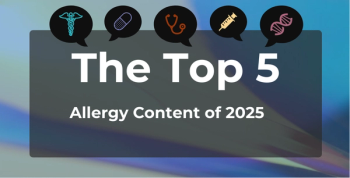
Rising Generic Prices Help Drive Up Cost of WHO List of Essential Medicines in US
A new study of Medicare Part D spending on generic and brand name drugs from the list of essential medications maintained by the World Health Organization (WHO) documents spending increases and shortages.
A study released Wednesday in The BMJ looking at Medicare Part D spending on generic and brand name drugs from the list of essential medications maintained by the World Health Organization (WHO) found that spending is increasing because of pricing increases for some older, generic drugs, as well as new medications. There are now fewer manufacturers of these generics, the study noted.
Earlier this year,
This retrospective study drew upon a cost analysis of the Medicare Part D Prescriber Public Use File, detailing annual generic and brand name drug prescribing and spending from 2011 through 2015.
The WHO’s Model List of Essential Medicines (MLEM) defines a critical set of drugs that constitute the “minimum medicine needs for a basic healthcare system.” Cross referencing the MLEM with all 4498 drugs in the Medicare Part D data resulted in 319 essential medicines. The authors excluded 73 products and added 19 generic formulations of already included medicines for cases in which the brand name was prescribed more frequently than the generic.
Of the 265 essential medicines, 197 (74%) were generic. Medicare Part D spending on those drugs were $87.2 billion, with annual spending increasing from $11.9 billion in 2011 to $25.8 billion in 2015 (116%). The report said spending was driven largely by the increased use of 2 new drugs used to treat hepatitis C.
Patients’ out-of-pocket (OOP) spending for essential medicines over the same period was $12.1 billion. Total annual OOP spending increased from $2 billion to $2.9 billion (47%), and annual per beneficiary OOP spending on these drugs increased from $20.42 to $21.17 (4%).
Total prescription count increased from 376.1 million to 498.9 million (33%), and cumulative beneficiary count grew from 95.9 million to 135.8 million (42%).
The per unit cost of half of the drugs increased faster than the average inflation rate during this period. Moreover, 9 (3%) of the essential medicines saw per unit cost hikes of more than 100 times the inflation rate; 11 (4%) had per unit cost increases of between 50 and 100 times the inflation rate.
Medicines with per unit cost increases of more than 100 times the average inflation rate included the brand name drugs albendazole (Albenza), pyrimethamine (Daraprim), and penicillamine (Cuprimine) and the generic drugs tetracycline, clomipramine, mannitol, griseofulvin, chlorpromazine, and doxycycline hyclate.
Reference
Li DG, Najafzadeh M, Kesselheim AS, Mostaghimi A. Spending on World Health Organization essential medicines in Medicare Part D, 2011-15: Retrospective cost analysis [published online July 17, 2019]. BMJ. doi: 10.1136/bmj.l4257.
Newsletter
Stay ahead of policy, cost, and value—subscribe to AJMC for expert insights at the intersection of clinical care and health economics.







































